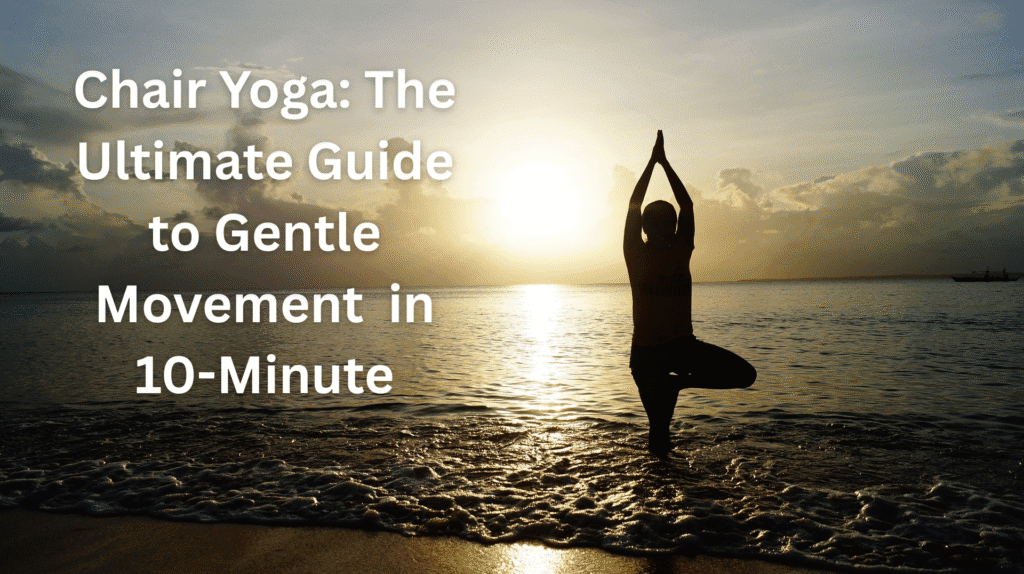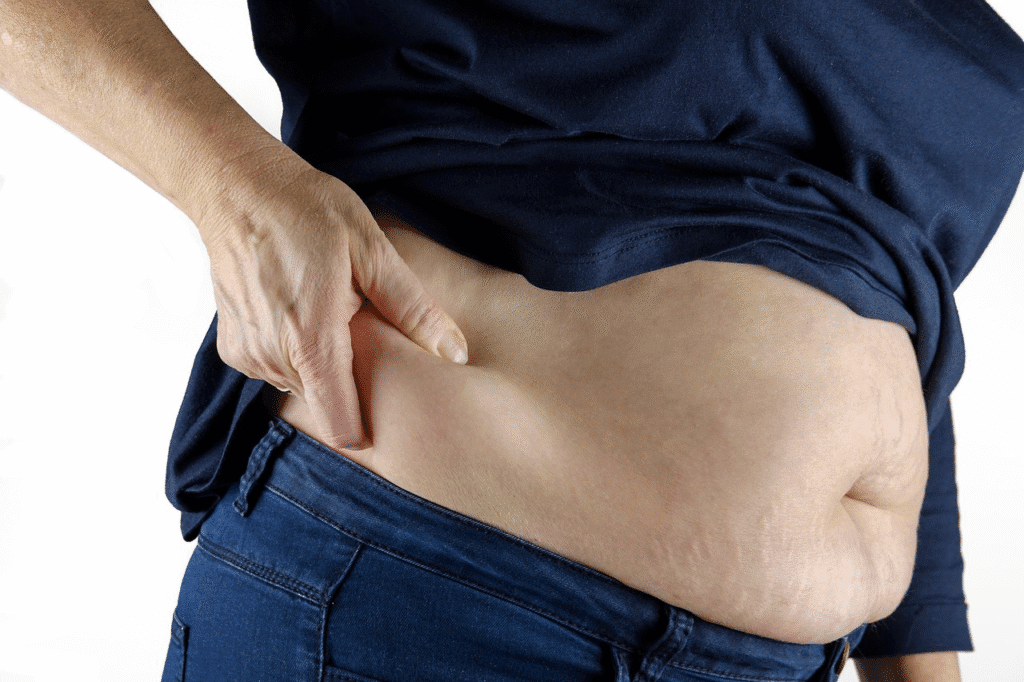Introduction to Chair Yoga
Chair yoga is a type of yoga that can be practiced while sitting in a chair or using a chair for support. It makes wellness available to people of all ages and degrees of mobility. Chair yoga is a gentle, non-threatening approach to stretch, strengthen, and reconnect with your body, whether you’re a senior looking to stay active, an office worker stuck at a desk, or someone recovering from surgery.
If you’re new to working out, check out our guide to Arms Workouts to Blast Fat and Build Muscle. It will help you add more gentle motions to your chair yoga regimen.
The need for low-impact movement has increased significantly as our world has become increasingly sedentary, particularly following the pandemic. Chair yoga meets this requirement by combining traditional yoga concepts with the realities of modern living. What makes chair yoga so appealing is that it doesn’t require a yoga mat, flexibility, or expensive equipment to get started.
2. What Is Chair Yoga?
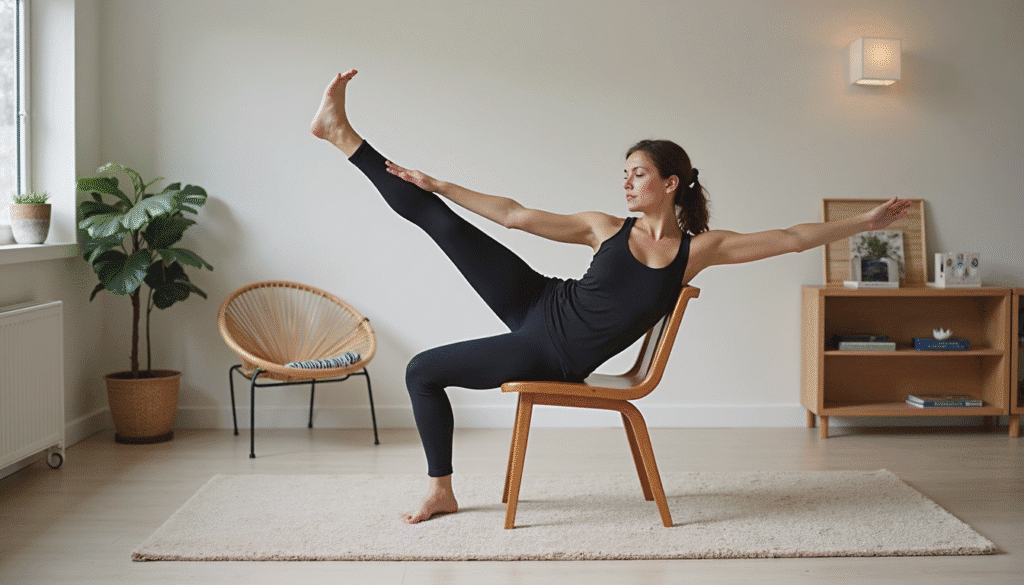
Chair yoga is a modified form of yoga that is easier for everyone to do, especially for people who have mobility issues. Instead of doing poses on the floor, people sit or stand in a chair to support their bodies. Chair yoga is easy to do, yet it still incorporates the same basic elements as regular yoga: pranayama (breath control), asana (gentle movement), and mindfulness.
Originally, chair yoga catered to the needs of older individuals and those recuperating from injuries. Now, it is a full-body wellness option. It works for individuals who may not feel safe or comfortable getting up and down from a yoga mat. Chair yoga is excellent since you can do it anywhere, even at home, at work, or in a hospital room.
People often think that chair yoga is “easy” or “less effective.” But that’s not true. With the right help, it can provide a surprisingly deep stretch and help you achieve balance, strength, and inner serenity. It allows people to reconnect with their bodies without experiencing pain or stress.
3. Who Can Do Chair Yoga?
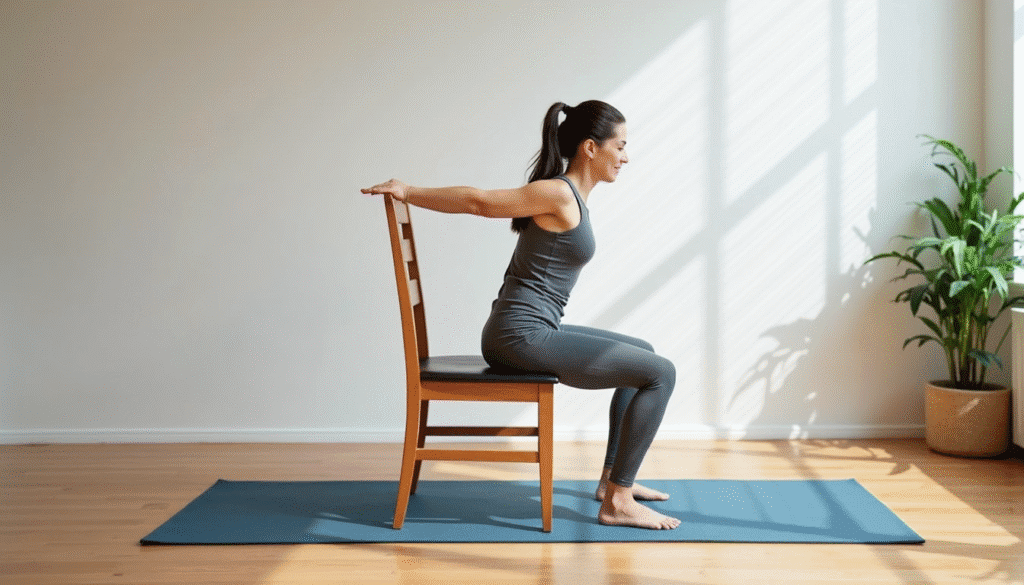
Anyone can practice chair-yoga, but some groups will derive more benefits from it than others. Seniors are the most prevalent group to do this because it helps them stay strong, mobile, and independent, reducing the risk of falling. Chair-yoga is gentle on the joints and can be adapted to suit anyone’s needs. It’s ideal for people with arthritis, osteoporosis, or balance problems.
Chair-yoga is also beneficial for individuals who work in offices. Sitting at a desk for long periods can cause your hips to stiffen, strain your neck, and lead to poor posture. Doing a few poses throughout the day can give you more energy, help you focus, and ease back discomfort. It’s the best way to reboot in the middle of the day.
Chair yoga is particularly beneficial for individuals recovering from surgery or an injury. It allows patients to stay active, improve circulation, and accelerate healing without placing undue stress on their bodies. People with chronic pain, fibromyalgia, or neurological illnesses also feel better when they do it regularly.
4. Research Has Demonstrated The Health Benefits Of Chair Yoga.
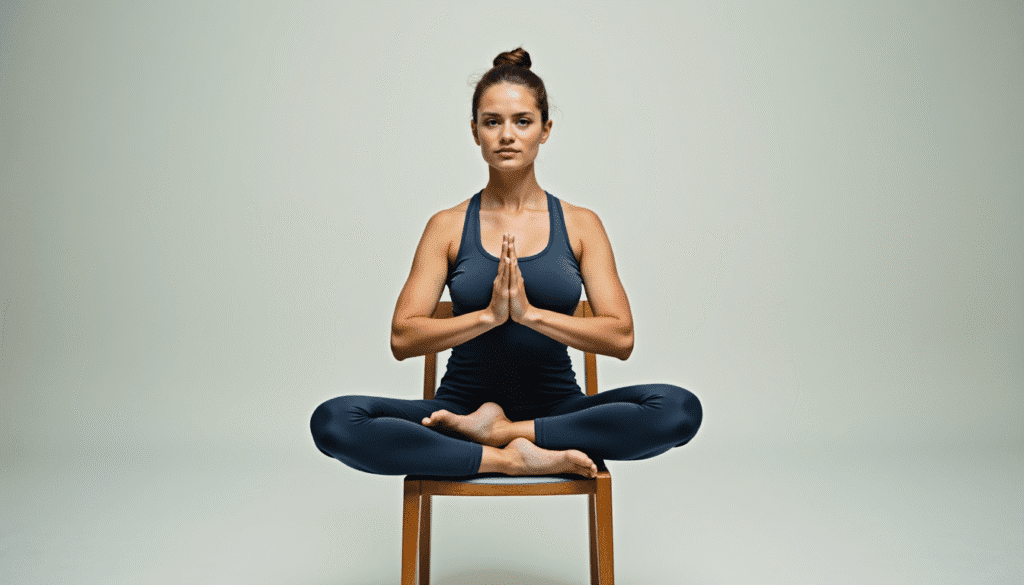
Chair-yoga is more than just a way to make things easier; it offers well-known health benefits. It helps make the body more flexible, especially in the spine, shoulders, hips, and ankles. Gentle stretching increases the range of motion and keeps joints lubricated, which makes them less stiff.
Chair-yoga is another excellent way to improve your posture and core strength. People who work at desks or are older often tend to slouch, which can lead to long-term pain in the neck and back. Chair- yoga can help strengthen the muscles that support the spine and improve its alignment.
Chair-yoga helps keep your emotions in check. It lowers cortisol levels, the hormone that causes stress, and enables you to become more conscious of your breath. Researchers have shown that it can help with anxiety, sadness, and sleep problems, especially in older individuals.
It also helps the heart by improving circulation and lowering inflammation. Chair- yoga is a safe and effective way for individuals with diabetes or high blood pressure to stay active.
Chair-yoga is gentle yet effective, unlike high-impact workouts. It doesn’t put extra stress on the heart or joints, so it’s ideal for long-term use. Even 10 to 15 minutes of daily practice can make a significant difference in how you feel physically and emotionally.
5. Basic Chair-Yoga Poses For Beginners
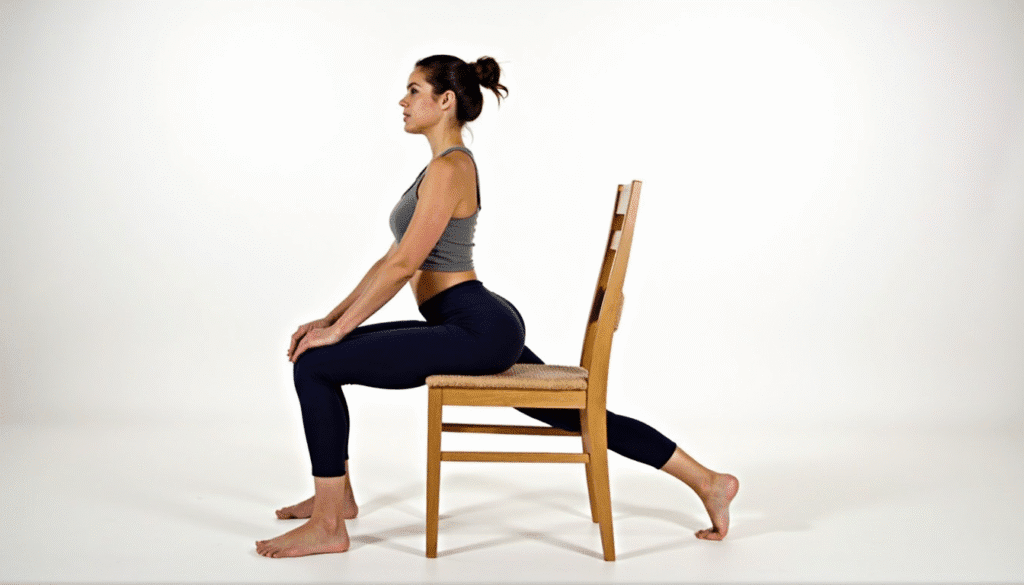
There are many safe, effective, and easy-to-do poses in chair-yoga. Here are some basic positions to help you get started:
- To do the Seated Mountain Pose, sit up straight with your feet flat on the floor and your hands on your thighs. To improve your posture, tighten your core and stretch your spine.
- Inhale to arch your back (Cow) and exhale to round your spine (Cat). This helps to relax the spine and release stress.
- Chair Twist: Sit sideways in the chair, hold the backrest, and slowly twist your body. It helps your spine move and your digestion.
- Hinge at the hips and reach for your feet or the floor while sitting forward. This stretches the hamstrings and relaxes the spine.
- Seated Warrior: Put one leg out to the side and reach your arms out. This helps strengthen your legs and improves your balance.
- Always take your time and breathe deeply. Don’t make a pose. The goal is to feel better, not to do well. You can change each pose by utilizing a cushion or a resistance band. You can watch chair- yoga videos on sites like YouTube to see what the exercises entail.
6. A 10-Minute Chair-Yoga Routine You Can Do Every Day.
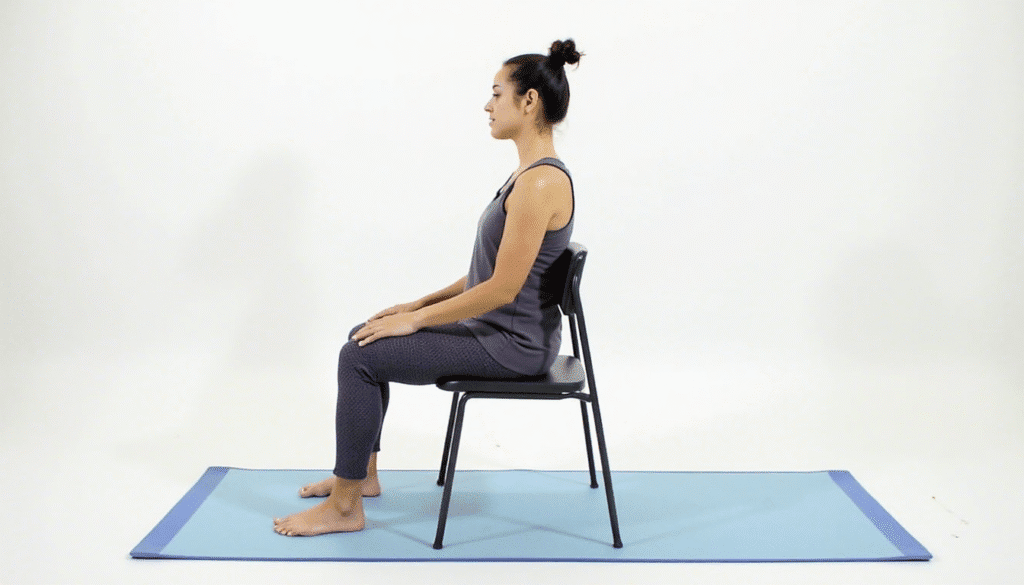
A little bit of chair yoga every day can have a tremendous effect on your life. Here’s a routine that is easy for beginners to follow that you may do at home or work:
- Seated Mountain (1 min)—Get your body grounded and your spine straight.
- Neck rolls and shoulder circles (2 minutes) will help you relax your neck and upper back.
- Seated Cat-Cow (1 minute): Wake up your spine.
- Chair Twist (1 min): Gently detoxify the spine and increase flexibility.
- Stretch the rib cage and lungs by doing the Seated Side Stretch for one minute.
- Ankle rolls and toe taps (1 minute) will help increase blood flow to your lower body.
- Seated Forward Fold (1 min.): Relax the neurological system.
- Mindful Breathing (2 minutes): Finish with deep Breathing and thankfulness.
You don’t need to wear workout clothing or have a yoga mat. Just sit on a sturdy chair, become comfortable, and breathe. This simple routine can help you reconnect with your body, lower your stress levels, and start or end your day feeling more grounded.
7. The Benefits of Chair-Yoga at Work
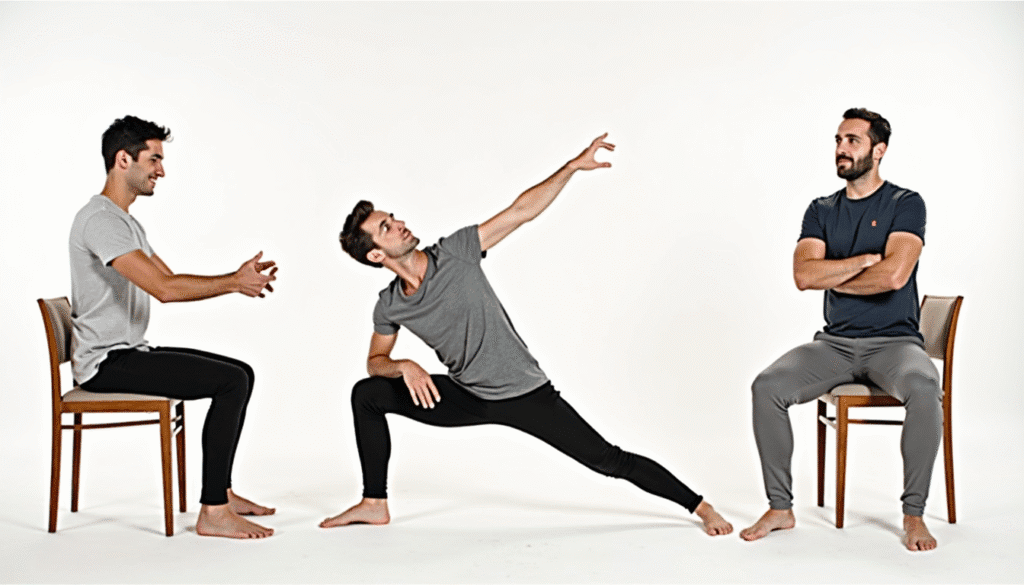
Chair-yoga can make a significant difference for individuals who spend their days at desks. Long hours at the computer can cause your back to hurt, your hips to stiffen, your posture to deteriorate, and your mind to become tired. But chair-yoga is a valuable and quick approach to refresh your body and mind without having to get up from your chair. Back Pain
Taking breaks to perform basic positions, such as sitting twists, neck rolls, or spine stretches, may help you stand up straighter, feel better, and increase blood flow. This not only makes you feel better physically, but it also enables you to focus and accomplish more.
Chair-yoga is also a great way to relieve stress. Deep breathing exercises done between meetings can help your nervous system relax, lower your blood pressure, and increase your emotional resilience. Some organizations even provide short chair-yoga sessions as part of their workplace wellness programs.
8. Safety Tips And Things To Keep In Mind With Chair Yoga
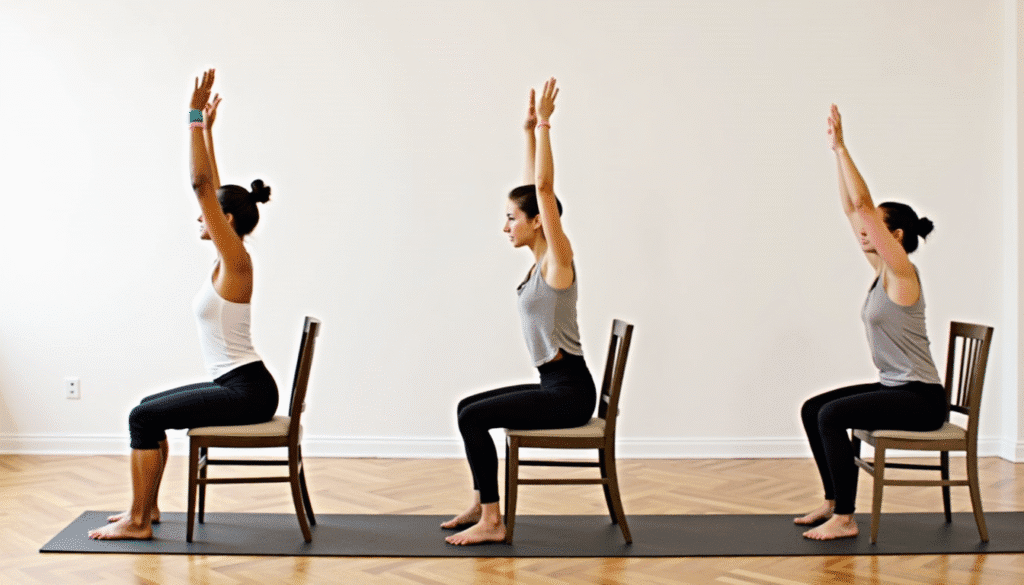
Chair yoga is generally safe, but be cautious if you have any underlying health issues. First and foremost, select the correct chair. It should be strong, not slip, and not have wheels. A dining chair with a straight back is excellent.
Talk to your doctor before you start, especially if you have heart problems, a spinal injury, or are recovering from surgery. Never let your body move. Pain is a sign, not a goal. Change the stances to make them more comfortable for you. Use props like pillows or yoga blocks to help you more.
Don’t hold your breath when doing poses; instead, breathe steadily. Stop and sit still if you start to feel dizzy. To avoid tension, especially in the neck, knees, and lower back, be conscious of your alignment.
Ensure that the licensed yoga teachers teaching the videos or online courses are adept at customizing their classes. Doctors have reviewed yoga sessions for seniors and those with long-term health problems on MyWellnessFit and other apps.
9. Common Questions About Chair-Yoga : FAQ
Q1: Does chair yoga help you lose weight?
Chair yoga isn’t very intense, but it can help you manage your weight by increasing your flexibility, reducing stress levels (which can impact your weight), and building muscle.
Q2: Is it okay to do chair yoga every day?
Of course! You can do chair yoga every day because it is gentle. Even only 10 minutes a day can help over time.
Q3: Do I need any specific tools?
No. You need a strong chair and clothes that fit well. A pillow or yoga strap are two props you can use.
Q4: Will chair yoga help with pain that won’t go away?
Yes. It can help with stiff joints, improve circulation, and lower inflammation. If you have any health issues, consult your doctor before starting.
Q5: Is chair yoga beneficial for people with arthritis or osteoporosis?
Yes, for sure. Many people suggest chair yoga for these problems because it places minimal stress on the body and is beneficial for your bones and joints.
10. In Conclusion, Here Are Some Reasons To Try Chair Yoga:
Chair-yoga isn’t just a way to avoid challenges; it’s a method to engage with your body and mind. A way to get back your body, your breath, and your peace of mind. Chair-yoga gives you strength and peace, one breath at a time, in a world that is often too fast and overwhelming.
Chair-yoga is gentle and flexible, whether you’re dealing with the effects of aging, recovering from an injury, living with chronic pain, or simply coping with the stresses of everyday life. It only needs you to show up; you don’t need to be young, strong, or fit.
Start in one position per day. Or take deep breaths for two minutes. That’s enough. Your heart and mind will also open up as your body does.
If you want to learn more, consider guided chair-yoga sessions on reputable health websites like MyWellnessFit. You can choose programs that are right for you.
You may not be able to do handstands while sitting down, but you can climb above your limits. And that’s the point of authentic yoga.

